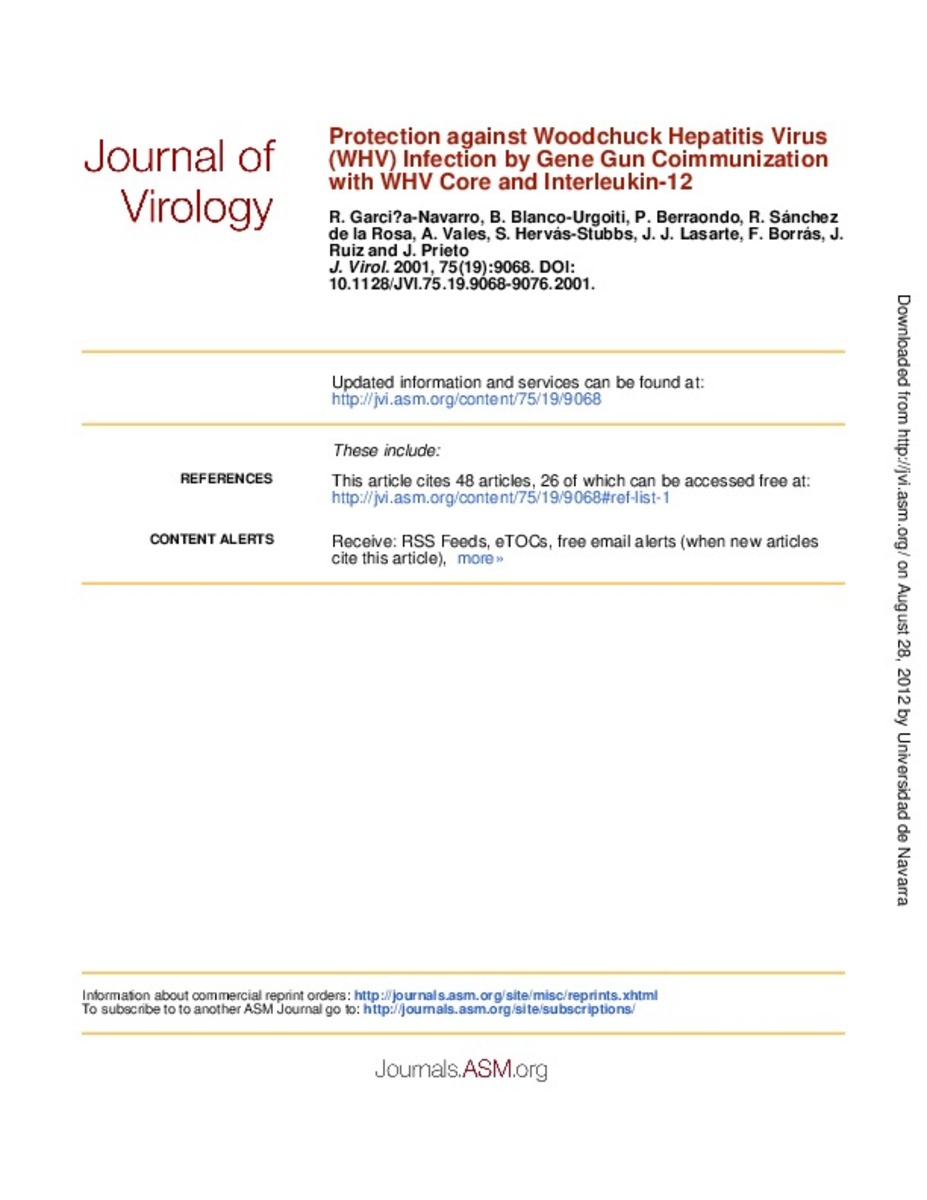Protection against woodchuck hepatitis virus (WHV) infection by gene gun coimmunization with WHV core and interleukin-12
Palabras clave :
Hepatitis B/immunology
Hepatitis B/prevention & control
Hepatitis B Virus, Woodchuck/immunology
Interleukin-12/immunology
Fecha de publicación :
2001
Editorial :
American Society for Microbiology
Cita:
Garcia-Navarro R, Blanco-Urgoiti B, Berraondo P, Sanchez de la Rosa R, Vales A, Hervas-Stubbs S, et al. Protection against woodchuck hepatitis virus (WHV) infection by gene gun coimmunization with WHV core and interleukin-12. J Virol 2001 Oct;75(19):9068-9076.
Aparece en las colecciones:
Estadísticas e impacto
0 citas en

0 citas en

Los ítems de Dadun están protegidos por copyright, con todos los derechos reservados, a menos que se indique lo contrario.









